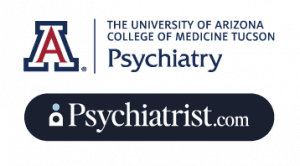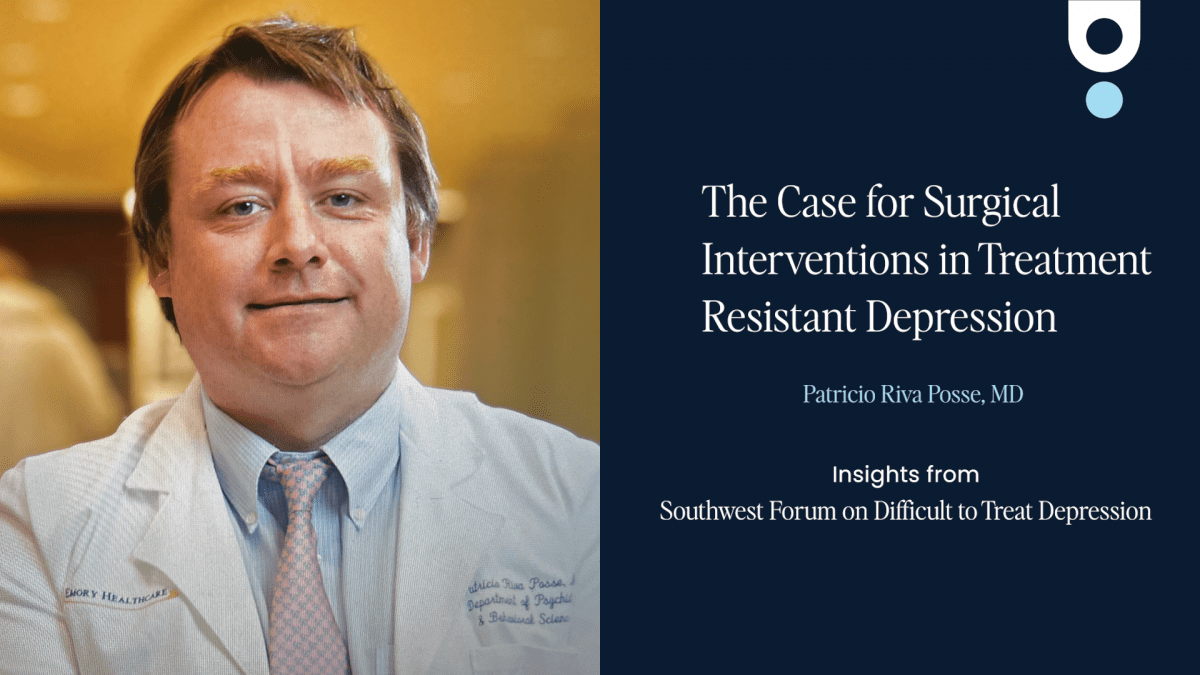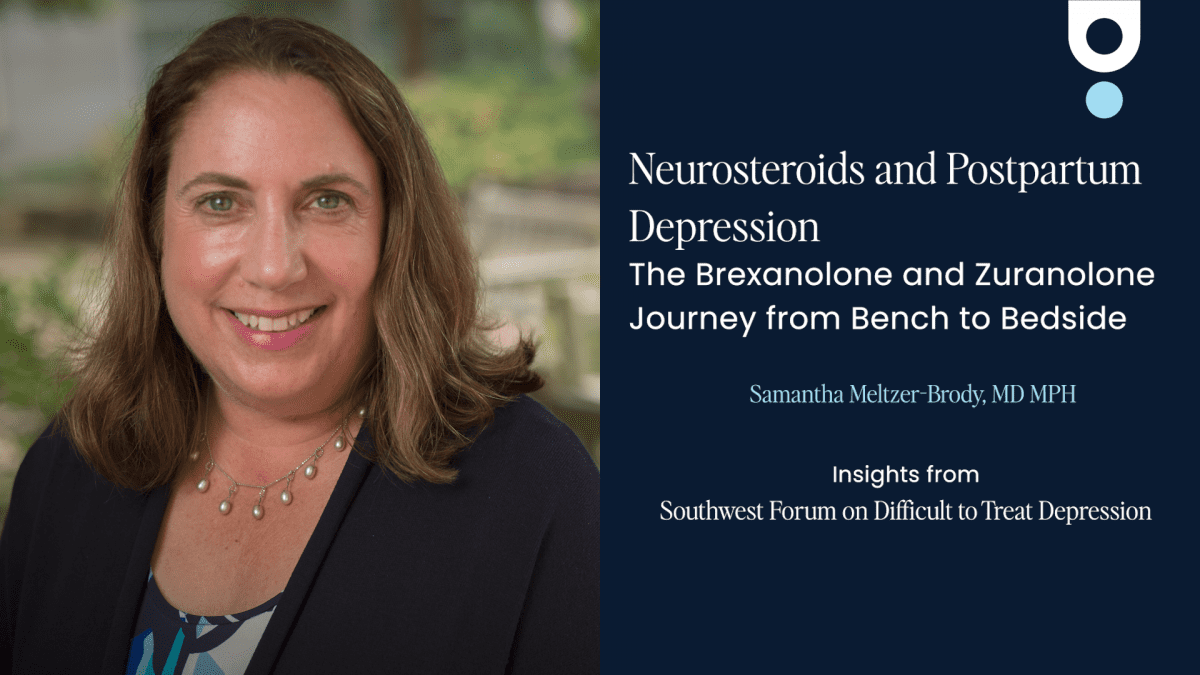Jay C. Fournier, PhD, is an associate professor in the Department of Psychiatry at the Ohio State University School of Medicine. He’s a practicing clinical psychologist with an active research program in the cognitive affective neuroscience of personality and depression.
Fournier’s research centers on isolating patient characteristics linked to differential responses to depression treatments, including placebo, antidepressant medications, and psychotherapy. Additionally, his work explores the neural and behavioral mechanisms through which those characteristics either facilitate or inhibit response to relevant treatments.
Fournier’s discussion examines the hurdles to providing outpatient care for depression. He’s seen the risks and the rewards of outpatient treatment firsthand, and he shares some of his own real-world experiences.
Jay C. Fournier, PhD
Associate Professor
Department of Psychiatry
Ohio State University School of Medicine
| This presentation was part of the “Southwest Forum on Difficult to Treat Depression: Focus on Approach, Algorithms, and Access” in July at the Arizona Biltmore in Phoenix. Psychiatrist.com worked with the University of Arizona College of Medicine – Tucson Department of Psychiatry.
To learn more, visit our Difficult to Treat Depression Clinical Resource Center. |
  |
|---|
Transcript
[00:12 – 01:25] Challenges in Outpatient Depression Care
Today, I’ll be talking about some of the challenges in providing outpatient depression care, particularly if you’re interested in providing outpatient care across the full severity spectrum. I’ll describe some of the challenges that we’ve identified here at The Ohio State University, the ways that we’ve thought about addressing those challenges, and the pieces that we’ve put in place in our treatment pathways. So over the last two years, our team at The Ohio State University has developed and implemented depression care pathways across the spectrum of outpatient depression severity.
There are at least three notable challenges to outpatient depression care. The first is access. So we all know that access is a challenge.
Nationally, only about a third of people with mental health conditions receive care from any kind of behavioral health specialist. Average wait times are about a month, and indeed, the vast majority of psychiatrists simply can’t get people in within a month. So that leaves many patients struggling while waiting for care.
The second challenge is that many of the patients on those wait lists may not need the treatments that they’re waiting for. So we know depression is placebo responsive, and that’s particularly true the lower on the severity spectrum that you find yourself. So there have been a number of meta-analyses that have demonstrated this.
[01:26 – 02:43] Placebo Response and Difficulty in Achieving Sustained Remission
This comes from a patient-level meta-analysis that my colleagues and I conducted, and we found that for patients in the mild to moderate range, there really was no difference between placebos and medications on remission rates. Statistically significant differences did emerge, but not until patients were in the severe or very severe range of severity. That takes us to the third challenge.
So even though depression is placebo responsive for many patients, getting somebody into remission and keeping them there turns out to be quite challenging. Going back to the STAR*D study to see how our first-line treatments are working, if we look at the percentage of patients who achieved a sustained remission, so that is, they remitted following treatment, and they were able to maintain that remission for at least one year, any one treatment got about a quarter of the patients there. Allowing up to two treatments optimistically moved that number up to about 41%.
But that means that roughly 60% of patients weren’t able to achieve remission or maintain it if they did following two treatments. Worse, about 90% of that group continue to struggle even after multiple additional treatment changes and augmentations. So if you do the math, that means about 50% of the patients who entered the study wound up really struggling either to get well or to stay well.
[02:44 – 03:33] Developing Treatment Pathways for Depression
So we have three challenges that we’re aiming to address. Difficulty with access, high levels of placebo response on the one hand, and difficulty maintaining remission on the other hand. So that led us to our goal of developing treatment pathways across the severity spectrum that can increase access, help to lead to response and remission more efficiently for everybody, essentially deploying our resources more efficiently, and increase the rates of sustained remission and recovery.
So that took us from a relatively standard model where you essentially have two pathways. Patients either receive a first-line treatment like medications or psychotherapy, or they may find their way to one of our interventional approaches like transcranial magnetic stimulation, ketamine, or ECT. We wanted to take seriously the idea that we have little evidence that any specific treatment is better than anything else for patients with mild to moderate depression.
[03:34 – 05:07] Treatment Approaches for Mild to Moderate Depression
And we wanted to develop pathways that respect the challenge in maintaining response to remission once it’s achieved. So what we’ve done is we’ve broken our acute treatment offerings into three sections. So starting with our mild to moderate patients first.
So here we provide a light touch, easily delivered, resource-late, bona fide treatment for patients who may not need individual medication management or individual psychotherapy in order to achieve remission. So here we provide behavioral activation. We use a 10-session group-based format for that treatment.
A recent meta-analysis found group-based behavioral activation to be equivalent to other bona fide active treatments for depression. That means we reserve our more resource-intensive treatments for folks either who don’t respond to that treatment or for patients who come to see us with a higher level of severity. So here we’re going with our two most well-validated, well-studied treatments, so individual antidepressant medication management or individual cognitive behavioral therapy.
A recent meta-analysis compared all of the head-to-head trials of medications versus cognitive behavioral therapy and found almost exactly zero difference between them. So what about patients who have already tried first-line treatments but have not yet responded adequately? So here we start out by conducting a reassessment, a comprehensive assessment to verify the diagnosis, to assess for any possible medical or psychiatric feature or comorbidity that may have been missed along the way that may either complicate care or can help to explain why our first-line treatments aren’t working well. We make sure we have a really clear sense of the person’s treatment history to see if anything may have been missed.
[05:08 – 06:34] Intensive Interventions for Treatment-Resistant Depression
If we determine that somebody really does qualify for a treatment specifically for a more refractory course of depression, we can provide one of our standard interventional psychiatry approaches like TMS, ketamine, or ECT. We also offer some novel recovery-focused psychotherapies. So these are relatively new psychotherapies, short-term psychotherapies that have been developed explicitly to try to improve positive affect, increase functional recovery in daily life, and improve well-being.
Particularly for folks who have struggled with chronic and hedonic depression. Our final pathway is the pathway out of the clinic. So here we provide an, again, light-touch, eight-session, group-based, mindfulness-based cognitive behavioral therapy for relapse prevention.
MBCT, as this treatment is often known, has recently been found by a meta-analysis to be the most effective treatment that we have for enhancing relapse protection after the end of treatment. So not only are we hoping that this arm will provide an additional boost for maintaining response and remission for patients, but we’re also hoping that it will serve as an off-ramp for the clinic so that patients in any of these other arms will have a place to land to receive a bona fide treatment that will help them stay well over the long-term and help to open up spots for other patients. So I’m happy to say that all of these pieces of our pathway are now fully launched.
[06:35 – 07:45] Mindfulness-Based Therapy and Relapse Prevention
We’re collecting data on how we’re doing with our patients. We look forward to sharing that with the community in the coming months. I want to thank you for your attention.
I want to thank the interdisciplinary team that helped make this possible. And of course, I want to thank our funders at the Ohio State Wexner Medical Center and the Ohio State Department of Medicaid. So I think one of the reasons this topic is so important to patients is that we know that different patients respond to different kinds of treatments.
At the same time, we know that there are a lot of patients out there who are waiting and struggling while they’re waiting to access care. And so what we’re trying to do is provide patients access to the treatment that is most likely to get them well as quickly as possible so that we can improve access for everybody. I think one of the main takeaways is for clinicians to take seriously what we know about depression and think about which kinds of treatments an individual patient might need.
Again, we have little reason to suspect that for those who are mild to moderate in severity, maybe they haven’t tried many treatments before, there’s little evidence to suggest that any treatments are better than any other treatments. So for those kinds of patients, we would recommend a relatively resource-light, bona fide treatment. What that will be will differ depending on the institution and what they have on offer.
[07:46 – 09:09] Recommendations for Clinicians and Individualized Treatment Plans
But I would encourage folks to think about offering a more resource-light intervention for those folks. By the same token, we know that roughly half, maybe somewhere between 40 and 60% at any rate of patients are simply not going to respond well to our first-line treatments. Again, I think we just need to respect that as clinicians, if we are doing our best with our first-line treatments and if the person is not moving, to think about moving on to a more sort of a higher intensity treatment, whether that’s an interventional psychiatry offering, whether that’s a partial hospital offering, intensive outpatient offering, depending on what you might have at your institution.
Again, I think that the main takeaway is to think about what sort of what stage of treatment might be the most appropriate for the patient that you’re seeing, given what we know about the illness. I do think this information can be applied into individual clinicians’ practices relatively immediately. So we’ve been working over the last couple of years here to reorganize our entire system around this model.
That said, I think within any individual clinicians, you know, individual practice or private practice, I do think that clinicians can take steps to identify which patients may be the most appropriate for the kind of treatment at the level of intensity that they’re providing, which patients may not meet quite that level, and which patients just aren’t responding to it, and move them on to the next stage of treatment.


